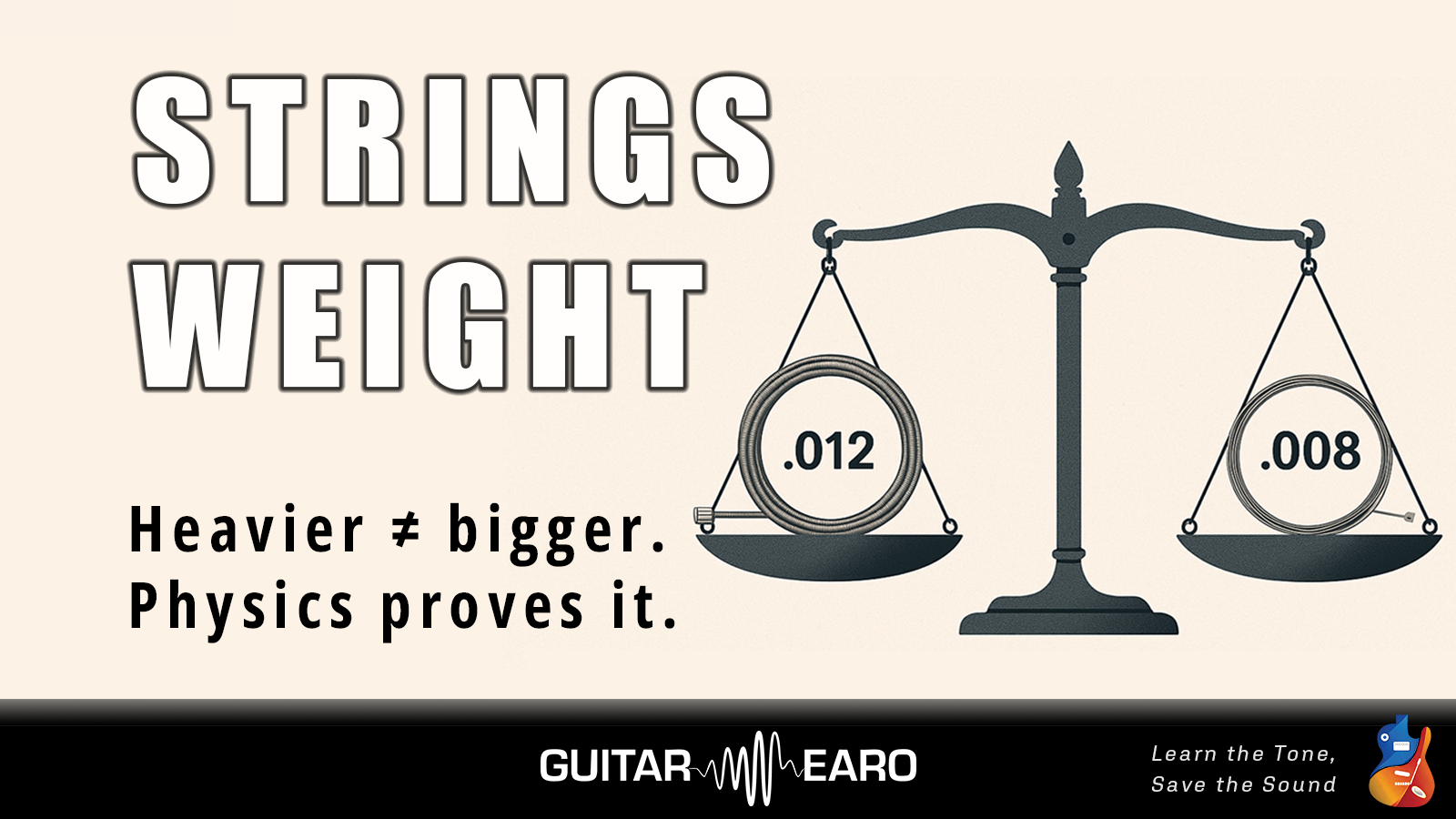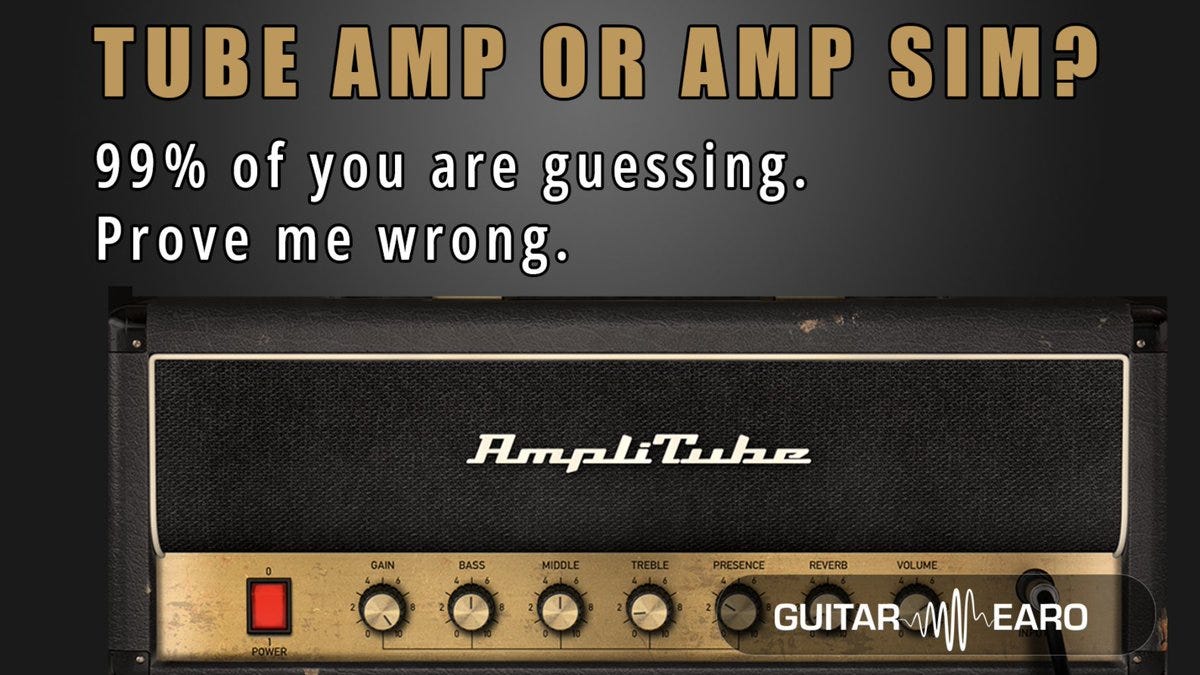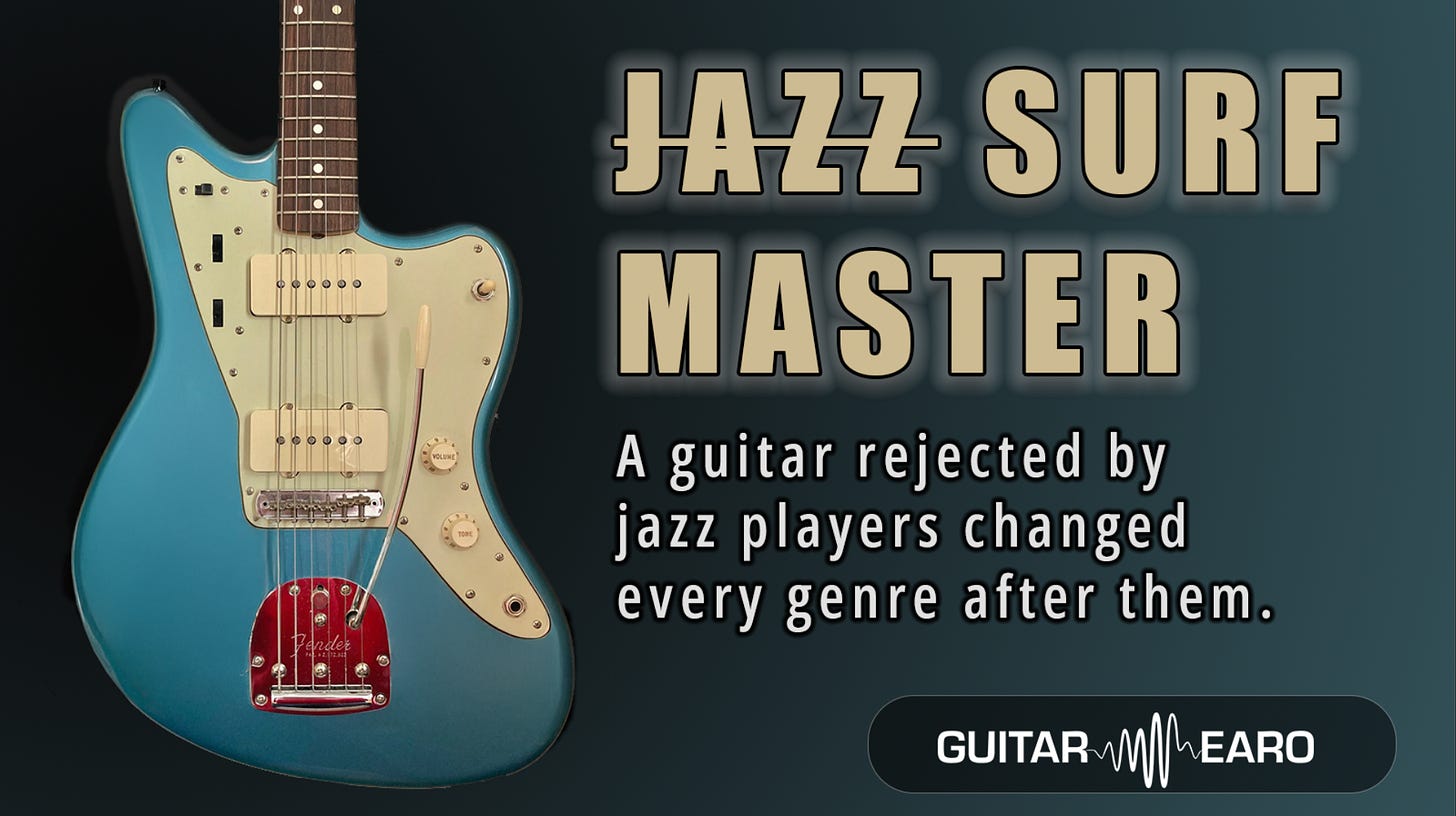Guitarists love a good debate.
Single coils vs. humbuckers.
Tube vs. solid state.
Analog vs. digital.
But there’s one battlefield hiding in plain sight, quietly shaping the way we all sound: string gauge.
For decades, players have passed down the same wisdom:
“Heavy strings give you big tone.”
“Light strings sound thin and weak.”
It feels obvious. More metal = more sound, right?
Except… physics says otherwise. And history proves it.
The Physics Flip
When you move from a .009 to a .011 on your high E string, you’re not just getting “a little more meat.” You’re increasing the tension by about 25%.
And here’s the kicker:
More tension = less pluck amplitude
Less pluck amplitude = fewer high harmonics
Translation?
Heavier strings often sound darker, not bigger.
Lab measurements back this up:
.010s <a href="do-heavier-guitars-actually-sustain">sustain</a> ~8% longer than .009s
.011s add about +3–5 dB in the lows
Yes, you get a little extra beef. But you trade away sparkle, agility, and bendability.
So when people talk about “big tone,” they may actually be hearing more low end and less shimmer, a very different thing.
Case Studies: The Blues Giants
Let’s look at two legends who prove the myth wrong in opposite directions.
🎸 Stevie Ray Vaughan played .013s. He sounded huge, but he also fought like hell, using superglue just to keep his fingers intact. His tone was massive, but his setup was brutal.
🎸 B.B. King, on the other hand, played .008s. Featherlight. Effortless bends. Yet his tone? Still legendary. Still massive. Still instantly recognizable.
Then there’s Billy Gibbons of ZZ Top, who famously told Stevie Ray:
“Why you working so hard? Just turn up your amp.”
Was he joking? Maybe. But he was also right.
What String Gauge Really Changes
Here’s the truth nobody tells you:
Gauge changes feel more than tone.
Heavier strings = more resistance, more fight.
Lighter strings = less resistance, more freedom.
Tone? That’s mostly in the hands, touch, and amp. The gauge just sets the rules of the game, how hard you have to fight, how far you can bend, how long you can play without bleeding.
Big tone doesn’t live in the thickness of your strings. It lives in how you play them.
The Takeaway
So next time someone swears by their “man-sized” .012s, remember:
Heavy strings ≠ better tone
Light strings ≠ beginner only
Your tone doesn’t need to pass a weight test. It needs to match your hands, your style, and your music.
Because the real myth is that tone lives in the gear.
The truth?
Tone lives in you.
👉 If you want more guitar myths broken with data, follow Guitar Earo.
Save this for your next string change, and send it to a friend who insists only heavy strings are “real.”
Learn the Tone.
Save the Sound.




